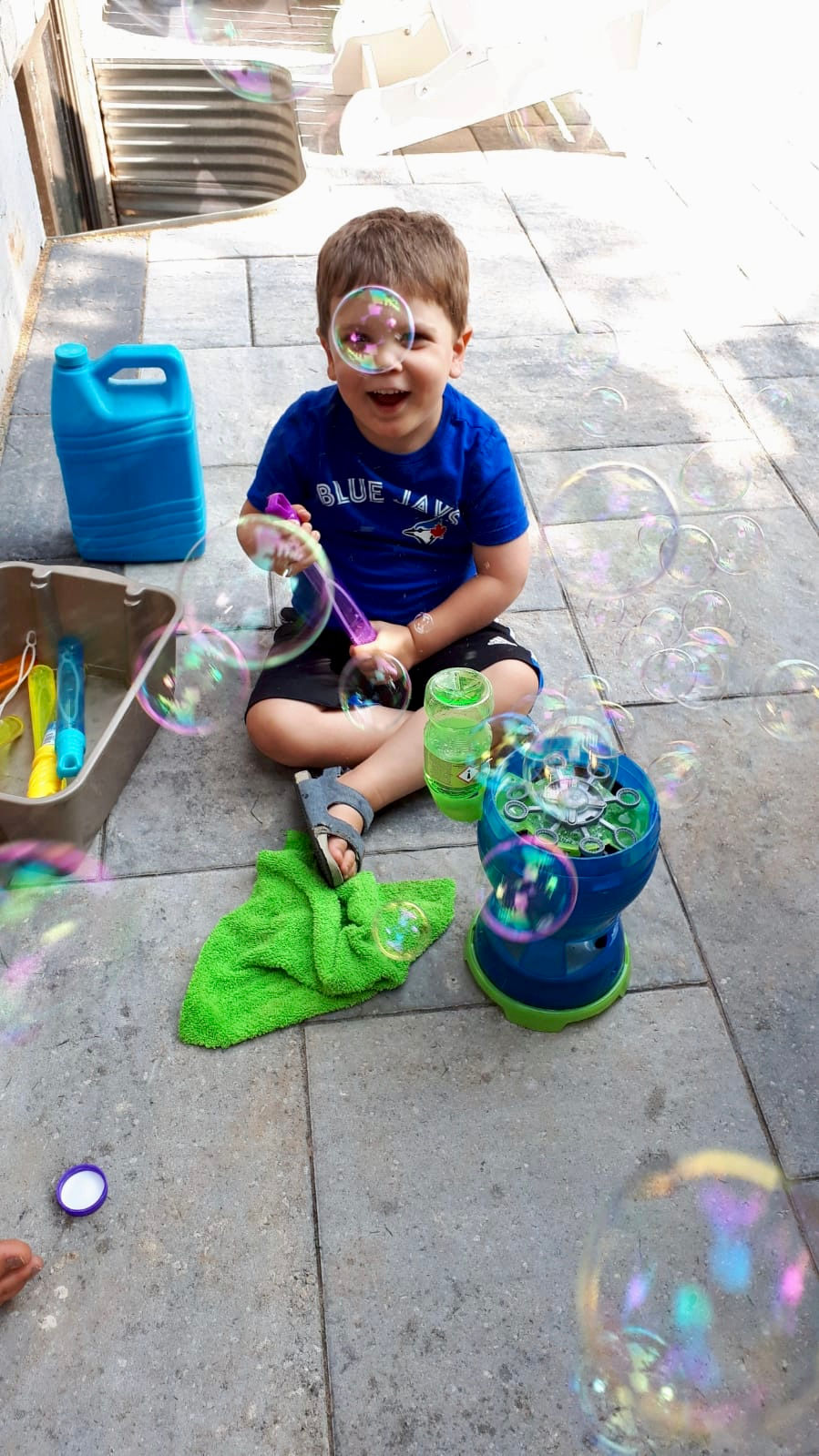Why Wednesday: Bubb, Bubb & Away?
- Nicole de Nobriga

- Jun 5, 2019
- 3 min read
Updated: Jun 12, 2019
Ever wonder what happens to bubbles after they float away? Or why some bubbles are HUGE and others are teeny weeny? And how you can make your very own bubbles? If this sounds like the “why” rollercoaster of a curious little mind, you’ve come to the right place! Let’s explore the fun facts about bubbles, and hopefully answer the questions inquiring minds want to know.
Let’s start with the definition of a bubble. If you ask your kiddo(s), they might say that a bubble is a small water balloon, a wet circle, or a magic “floatie." All good guesses! The technical answer is that a bubble is a soapy sphere made up of air, water, and soap. The circular layer of the bubble is made of soap molecules (water + soap), while the inside of the bubble holds air. As described on kidsdiscover.com, it’s like a “water sandwich with soap molecules for bread…and they work together to hold air inside."

Now that we know the anatomy of a bubble, what makes it float? The simple answer is that the air inside a bubble is lighter than the air outside of it, but perhaps a floating demonstration might help. Grab a tub of water and place different objects inside; it becomes clear which objects will float and which ones will sink. Any object that is lighter (less dense) than the water will float, and any heavier (more dense) objects will sink. Same goes for a bubble! Bubb, bubb & away!

Up go the bubbles into the air, and the next inevitable question is, where are they going? My 4 year-old proudly guessed: “Mommy, do bubbles go to bubble heaven?" Major points for a colourful imagination, but the truth is that bubbles burst when the tension is broken inside the bubble, or when they evaporate. Specifically, a gust of wind or contact with another surface will break the tension and cause a bubble to burst, or any dry matter will make a bubble evaporate and burst.

Fun Facts:
A bubble will float longer in cold air than warm air. It’s almost like the bubble temporarily freezes as it floats in colder air.
A bubble is reflective like a mirror. Take a look inside and what do you see?
The size of a bubble is determined by how long you can blow into the wand, and the size of the wand.
A bubble will burst if you poke it with a dry straw, but try poking it with a wet straw…wet on wet won’t burst!
The longest bubble recognized by the Guinness Book of World Records is 32 meters long made by Alan McKay from New Zealand.
Bubble Reading List:
Here are some great bubble books for curious little readers:
“Bubble Bubble” written & illustrated by Mercer Mayer.
“Bubble Trouble” written by Margaret Mahy & illustrated by Polly Dunbar.
“Pop!” written by Jason Carter Eaton & illustrated by Matt Rockefeller.
“Curly’s Fun With Bubbles” written by Sherry Boddie & illustrated by Sara Sanchez.
“Not Your Typical Dragon” written by Dan Bar-el & illustrated by Tim Bowers.
Homemade Bubble Recipe:
If you’re looking for an easy 3-ingredient bubble recipe, look no further than The Artful Parent website: https://artfulparent.com/how-to-make-homemade-bubbles/
4 cups warm water
1/2 cup of sugar
1/2 cup of dish soap
Whisk the sugar & water together until the sugar dissolves, then add the dish soap. Voila!

Now go have some fun and pop some bubbly ;)



Comments